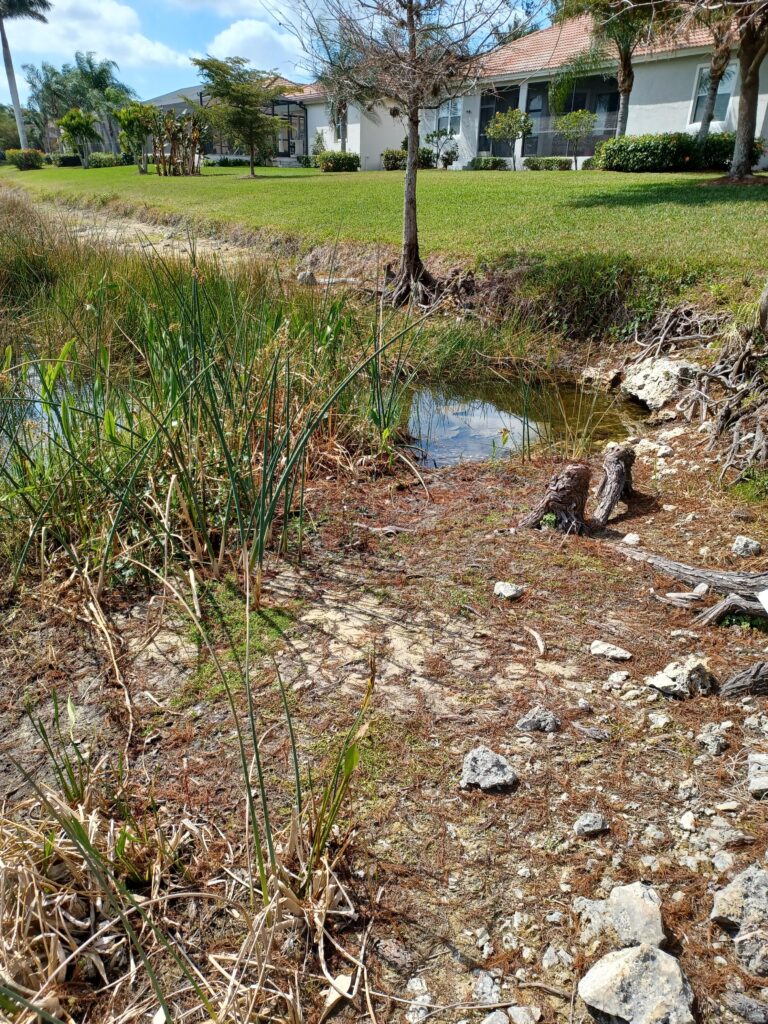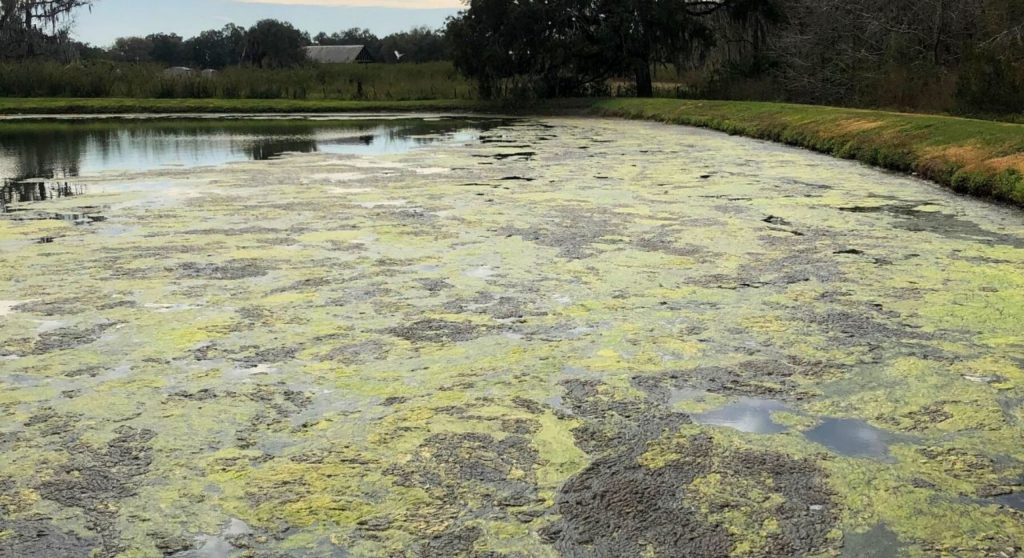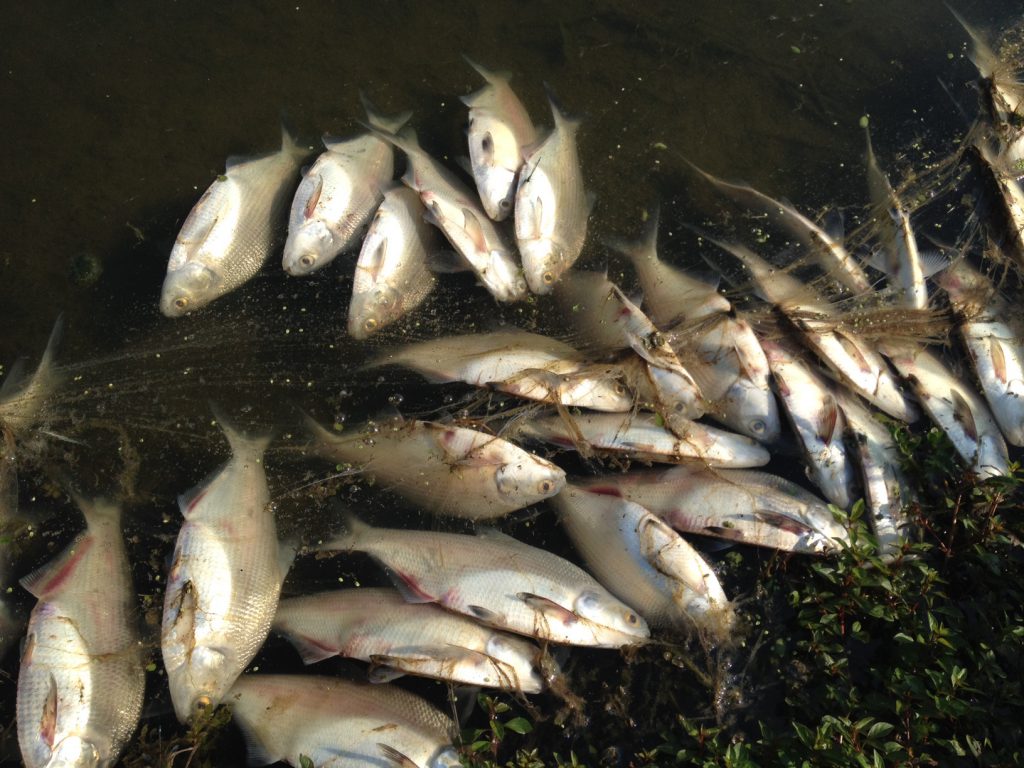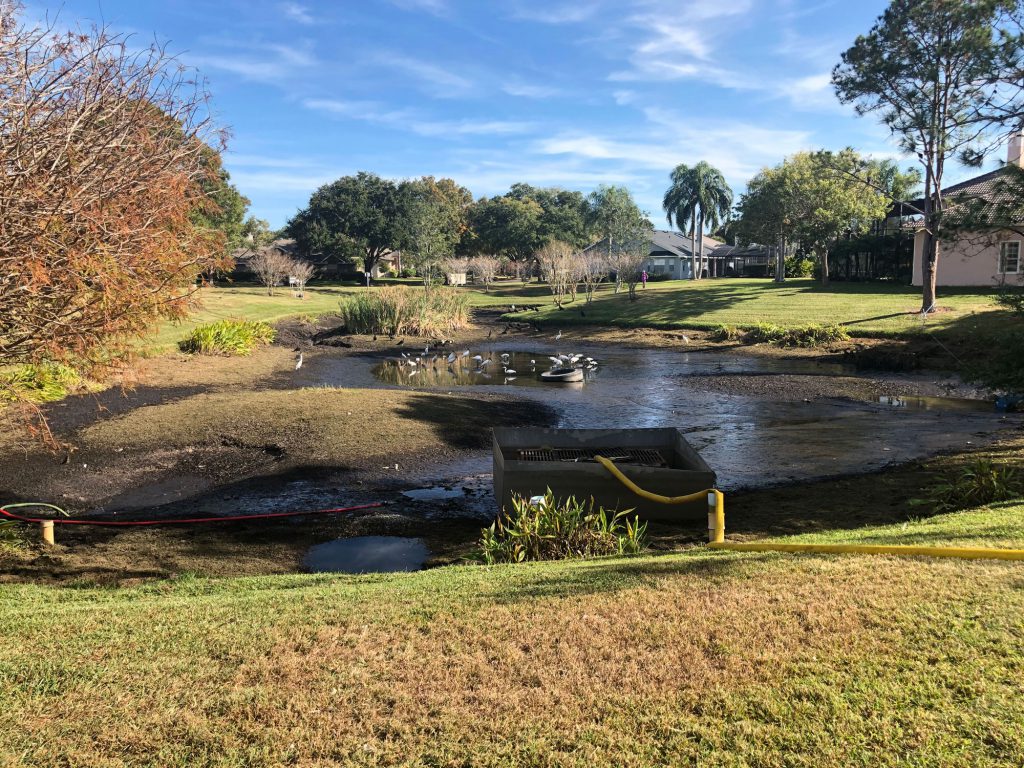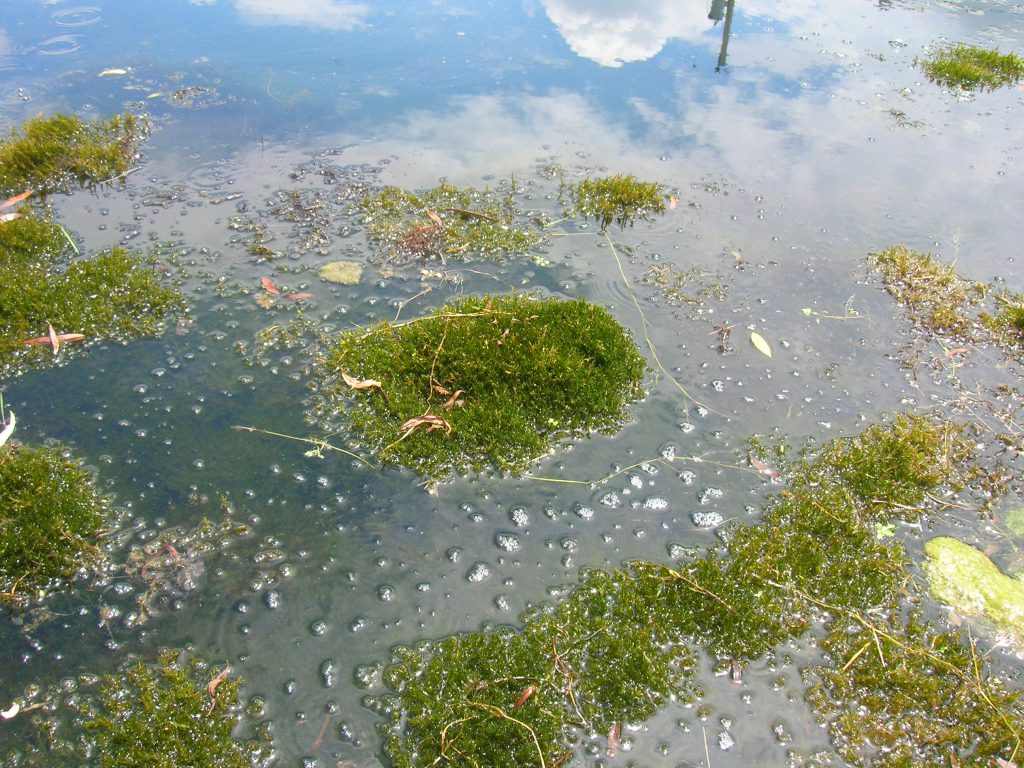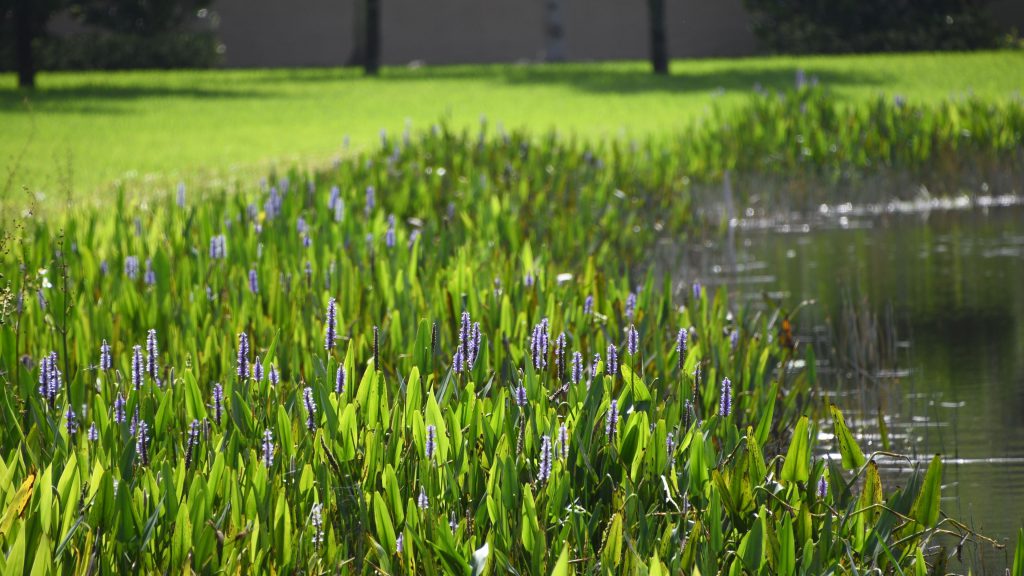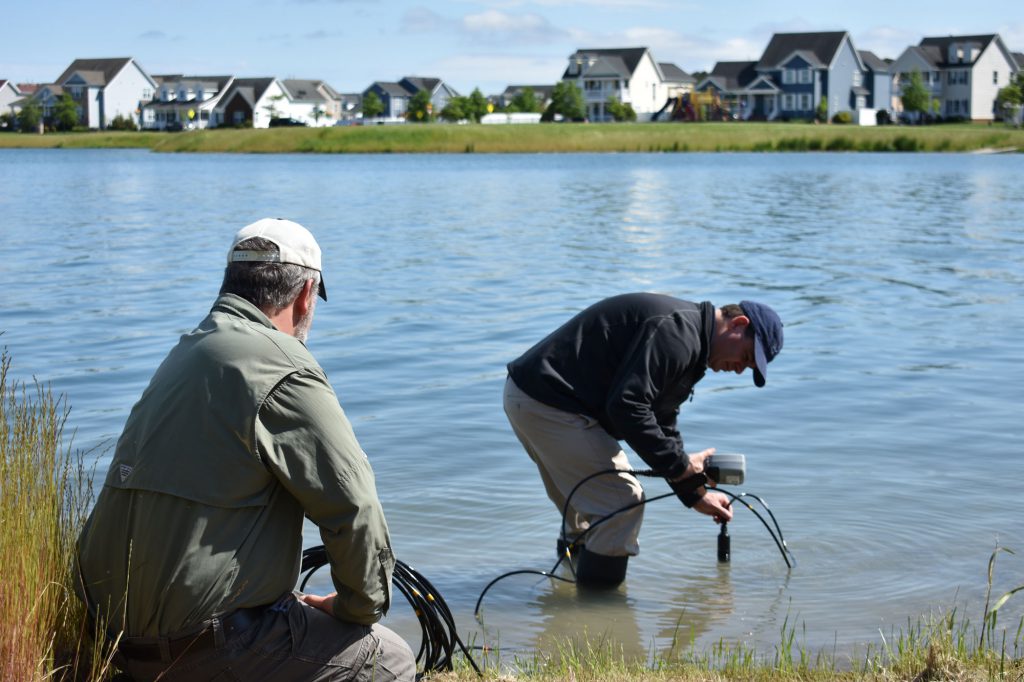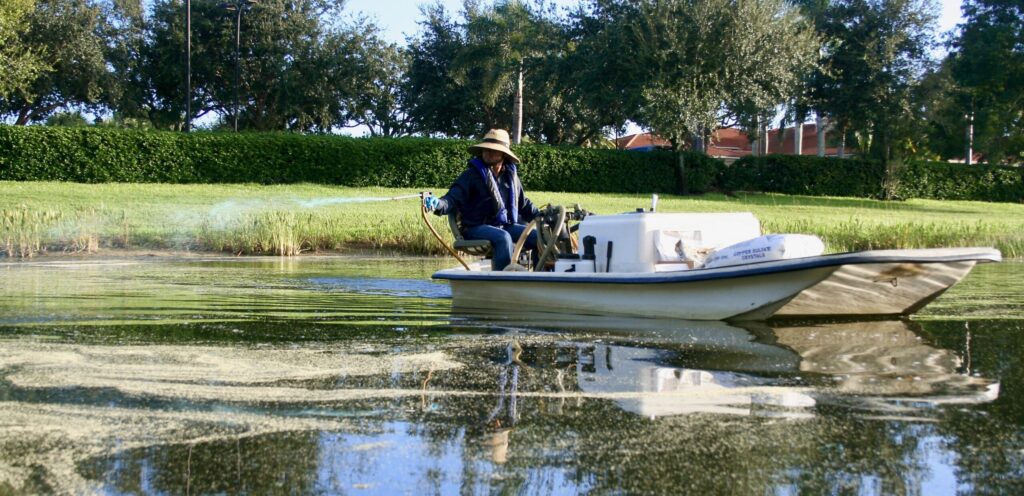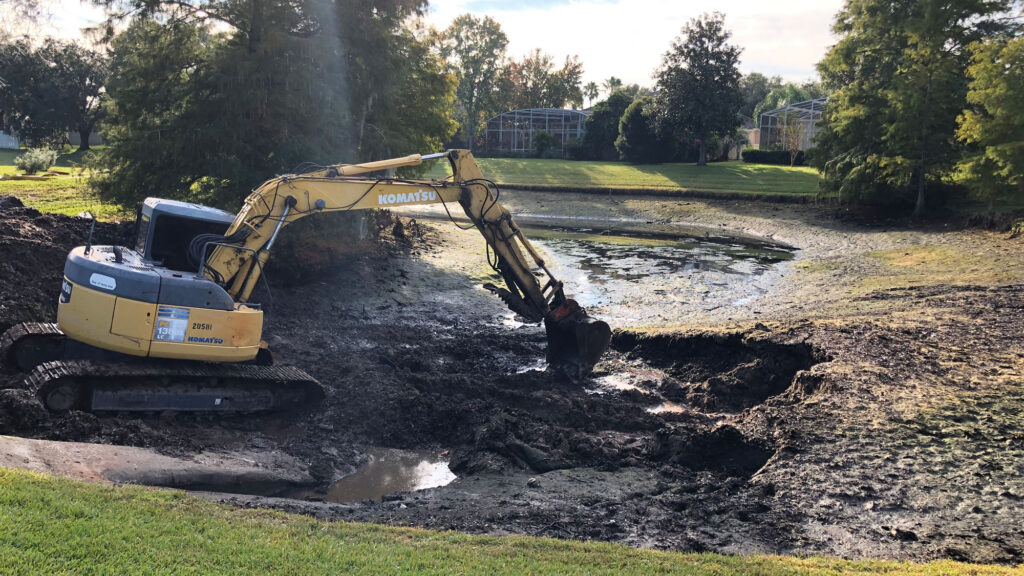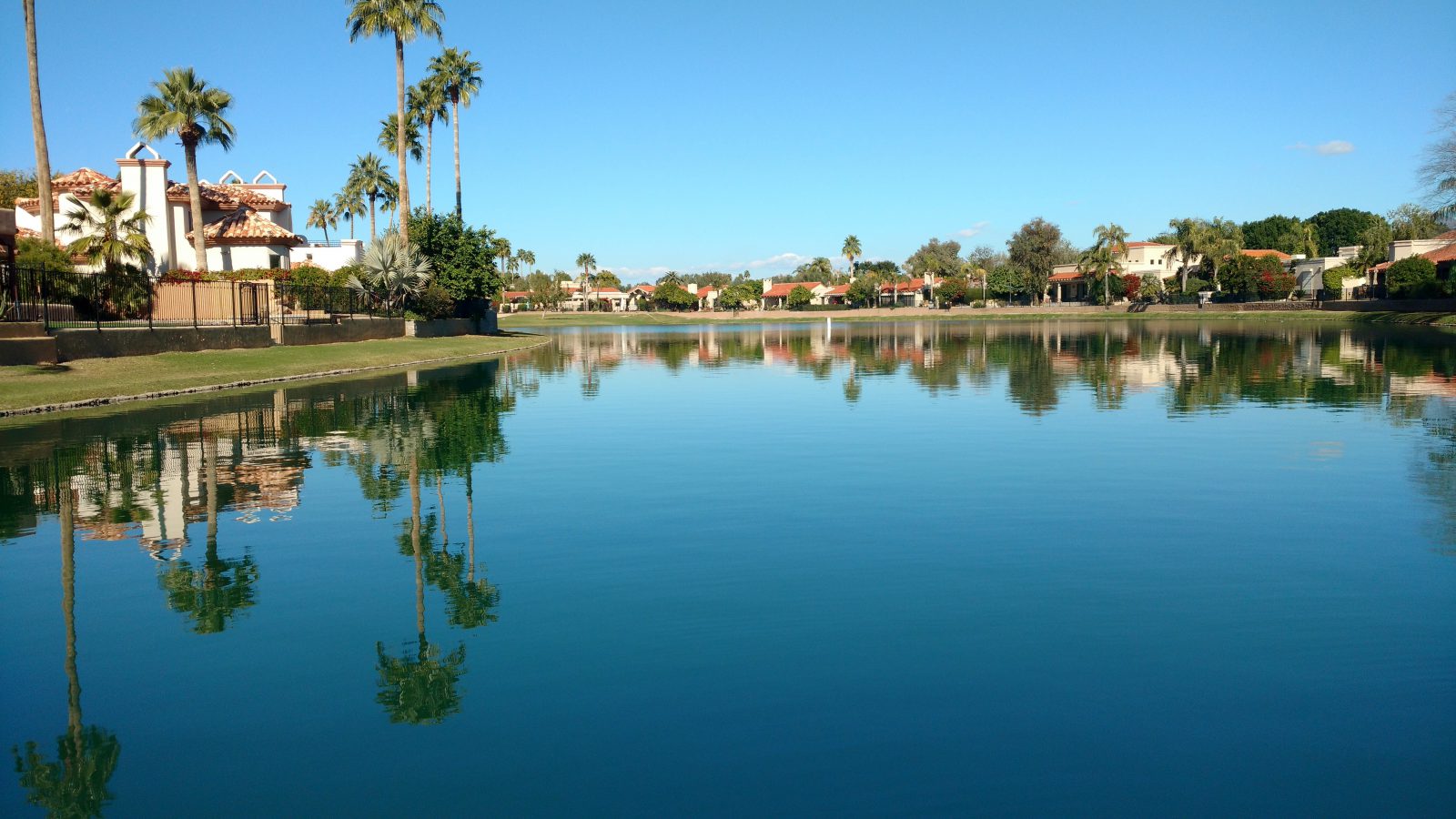
Drought and your lake - what you can do to protect your waterbody
When property owners and managers picture their perfect waterbody, they may imagine clean, sparkling water framed by a vibrant palette of wildflowers. Others may envision a brimming pond surrounded by a healthy, secure shoreline. Regardless of your goal, maintaining ideal conditions can be hard. Environmental factors like weather, temperature, and sunlight may create unexpected challenges like droughts, which are becoming more common and severe, according to the U.S. Geological Survey. In order to preserve the health of your waterbody during water shortages, it’s important to understand how aquatic ecosystems are affected by droughts and what you can do about it.
Droughts occur when there is a period of abnormally low rainfall and prolonged evaporation. One of the most visible signs that your waterbody has been affected by drought is a reduction in water level. In addition to shrinking the size and appearance of your waterbody, low water levels can have serious impacts on the health of lakes and ponds.
Below are 6 outcomes of low water levels due to droughts:
1. Exposed shorelines
As water lowers during a drought, the shoreline recedes, revealing bare sediment, submersed plants, and stormwater or irrigation equipment. Deep cracks and ruts, irregular contours, and sediment “islands” may appear as newly exposed areas dry out under the hot sun. These spots are especially vulnerable to erosion, which can endanger the public and cause costly property damage.
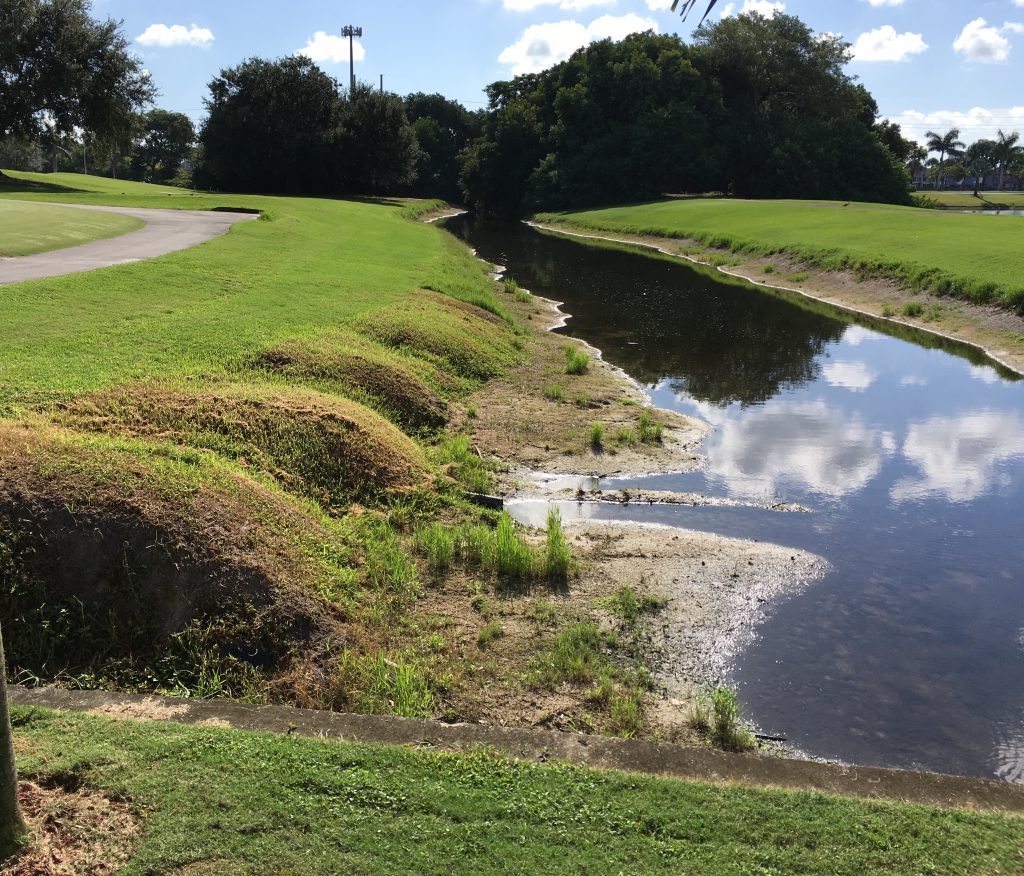
2. Sediment accumulation
When sediment erodes from the shoreline, it accumulates at the bottom of the waterbody. As a result, the depth and volume of the system will decrease over time. Though sedimentation occurs naturally due to wind, rain, and activity on land, droughts accelerate this process. When the drought ends, stakeholders may find that their waterbody’s ability to hold water has decreased.
3. Concentrated nutrients
Lakes and ponds naturally contain nutrients that serve as fuel for native plants. Balanced nutrient levels indicate that the water is healthy, but as water evaporates, nutrients can become more concentrated. Nuisance weeds, slimy algae, and toxic cyanobacteria are known to develop in waterbodies that contain high nutrient concentrations.
4. Depleted oxygen levels
Dissolved oxygen (DO) is essential to healthy aquatic ecosystems. DO supports beneficial bacteria, fish, and wildlife and is necessary for the decomposition of plant matter and animal waste. Intense temperatures and sunlight can deplete DO. Shallow ponds may become cloudy, smelly, and inhospitable to beneficial species. Deep waterbodies may experience a thermocline – the formation of distinct water layers based on DO and temperature. If these layers rapidly mix during rainfall or when water inflow resumes, water quality conditions can become temporarily imbalanced. Fish kills are common during these events.
5. Loss of water supply
In addition to negatively affecting the environment, dry spells can have a significant impact on surrounding communities. Drought reduces the availability of water for irrigation, recreation and tourism, drinking water, and agriculture. When exposed, stormwater equipment may be damaged, which increases the risk of flooding during the next rainstorm. Shallow, stagnant water can also become a breeding ground for disease-carrying mosquitoes.
6. Intensified sunlight
In times of drought, ponds shrink and become more shallow, allowing more sunlight to reach their depths. Furthermore, when there is lack of rainfall, less runoff enters the water and organic matter will eventually settle, leading to a clearer water column. In addition to exacerbating other drought-related issues, increased sunlight can accelerate photosynthesis and lead to the rapid growth of nuisance weeds and algae.
Though droughts are inevitable weather events, stakeholders can take several proactive steps to lessen the impact of water shortages.
Protect the shoreline with native plant buffers
Stakeholders can get ahead of shoreline erosion by installing a vegetative buffer around the perimeter of the water. The most effective buffers are comprised of native plants, sedges, and rushes that develop deep root systems to hold sediment in place. Buffers can also help filter nutrient-rich organic matter and pollutants when rainwater flows into the ecosystem before or after a dry spell.
Shorelines that already exhibit signs of erosion are at greater risk of deteriorating during dry spells. If cracks are beginning to form in the sediment, drop-offs are developing, or pipes and tree roots are visible along the bank, it may be time for a comprehensive shoreline restoration using bioengineering techniques and materials. This approach not only helps prevent further erosion but also enhances the natural beauty of the property.
Ongoing visual assessments and water quality testing
By partnering with Aquatic Experts, stakeholders can relax knowing their waterbody is being carefully monitored on a regular basis. An Annual Management Program makes this easy. Professional monitoring involves visual surveys of the shoreline and inspections of stormwater or irrigation equipment. For larger properties, professionals may employ advanced drone technology to view hard-to-reach areas.
Water quality tests may also be conducted. By monitoring water chemistry over time, it’s possible to pinpoint and correct potential imbalances. Turbidity tests, which measure water clarity and suspended particles, may help identify early signs of sedimentation. Proactive nutrient and DO tests can help Aquatic Experts evaluate overall water quality health and develop an action plan to restore balance.
If nutrient concentrations are elevated, products like Aluminium sulfate (alum) or lanthanum-modified clay can be utilized to physically bind with or remove excess nutrients from the ecosystem. A professional can recommend the most effective product based on the size and function of the waterbody. DO deficiencies are common, and introducing a floating fountain, surface aerator, or submersed aerator can help maintain healthy DO levels and prevent thermoclines during a dry spell.
Manage nuisance pond algae or weed growth
Abundant weeds and pond algae can be detrimental to aquatic ecosystems, particularly during periods of drought. When large amounts of plant life die off and degrade, they often form a thick layer of muck on the bottom, especially when DO is also depleted. This muck is rich in nutrients and may fuel additional weed and algae growth, kicking off a dangerous cycle of growth and die-off.
Keeping nuisance growth at bay ahead of dry spells can help limit these effects. Aquatic Experts can use a variety of tools to control algae in ponds and nuisance weeds. Mechanical harvesters and hydro-rakes physically remove floating or submersed aquatic weeds from the water, depositing them on land for disposal. Hydro-rakes offer the added benefit of scooping detritus and other nutrient-rich materials from the bottom to increase depth and help restore balanced nutrient levels. In some cases, EPA-registered herbicides and algaecides may be used to establish control before implementing proactive solutions.
Lake and pond dredging to restore depth
Though all lakes and ponds naturally lose depth over time, droughts can cause this to occur faster than usual – and reveal sedimentation problems that may have gone overlooked. Aquatic Experts use dredging to physically remove hundreds to thousands of pounds of muck and sediment from the bottom to restore waterbodies to their original depth. All waterbodies will require dredging services at some point, typically every 10-20 years, so it’s important to budget well ahead of time.
Collaborate and educate stakeholders
Protecting lakes and ponds is hard and can be an investment. Homeowners associations, golf courses, and municipalities, in particular, face the additional challenge of getting all stakeholders on the same page. An Aquatic Expert can help educate stakeholders about the risks associated with water shortages and the value of a proactive freshwater management approach.
Professionals can also help decision-makers educate their communities about essential practices to preserve lake and pond health, such as properly disposing of yard debris and pet waste, reducing the use of lawn and garden fertilizers, and choosing environmentally friendly detergents and cleaning supplies. During dry spells, water conservation is also essential. Consider watering lawns and gardens during the early morning or late evening to prevent evaporation. Choose drought-resistant plants that require minimal water. Repair leaky hoses or irrigation equipment. Install a rain barrel to collect rainwater for later use. Apply mulch to retain moisture around landscaping.
Keep your aquatic assets protect with expert care
Droughts are increasing in frequency and severity, but they do not spell the end for your lake or pond. As with any major weather event, consistent monitoring and maintenance can help your waterbody endure stressful environmental conditions and bounce back when they subside. No matter where you are located in the country, water shortages can be a threat. Speak with an Aquatic Specialist today to begin developing a management program for your aquatic assets.
Enjoy Worry-Free Water with SOLitude
Contact Us to Protect Your Lake with Sustainable Solutions
Call us at 888-480-5253 or complete the form below to connect with an aquatic management expert.
SOLitude Lake Management is a nationwide environmental firm committed to providing sustainable solutions that improve water quality, enhance beauty and preserve natural resources.
SOLitude’s team of aquatic scientists specializes in the development and execution of customized lake, stormwater pond, wetland and fisheries management programs. Services include water quality testing and restoration, algae and aquatic weed control, installation and maintenance of fountains and aeration systems, shoreline erosion control, muck and sediment removal and invasive species management. SOLitude partners with homeowners associations, golf courses, private landowners, businesses and municipalities. SOLitude Lake Management is part of Rentokil, a leading business services company, operating across the United States, Canada and Puerto Rico.
For more information, visit SOLitude Lake Management at solitudelakemanagement.com, and connect on Facebook, LinkedIn and Twitter.








